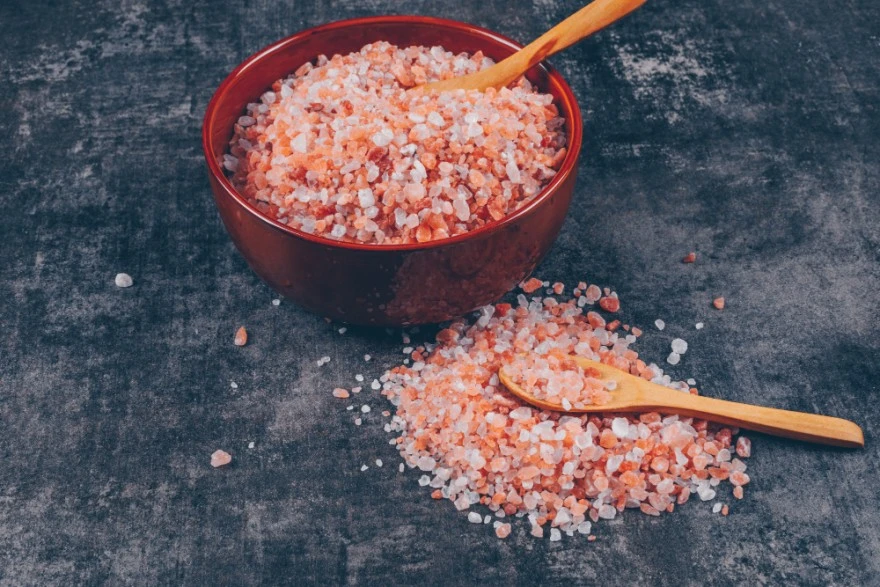Preventive Healthcare
Defeating Contact Dermatitis: Unveiling Causes, Symptoms, and Solutions

Table of Contents
- What Is Contact Dermatitis?
- What Are The Types Of Contact Dermatitis?
- What Causes Contact Dermatitis?
- What Are The Symptoms Of Contact Dermatitis?
- How Do You Get Rid Of Contact Dermatitis?
- How Is Contact Dermatitis Diagnosed?
- How Is Contact Dermatitis Treated?
- Who’s At Risk Of Contact Dermatitis?
- How Can I Prevent Contact Dermatitis?
- What Can I Expect If I Have Contact Dermatitis?
- Is Contact Dermatitis Contagious?
- How Long Does Contact Dermatitis Last?
- Conclusion
Dealing with contact dermatitis can be a challenging experience, but understanding its causes, symptoms, and available treatments can provide relief and peace of mind. In this article, we'll explore contact dermatitis, aiming to offer guidance and support without causing unnecessary alarm. Let's look into this common skin condition, empowering you with the knowledge to manage it effectively and regain control of your skin health.
What Is Contact Dermatitis?
Contact dermatitis is an inflammatory skin disease caused by direct contact with an allergen or irritant. Contact dermatitis appears as a swollen, itchy rash and is caused by exposure to a variety of chemicals and metals, which can cause toxic effects even without the involvement of T cells.
What Are The Types Of Contact Dermatitis?
There are primarily 2 main contact dermatitis types:
- Irritant Contact Dermatitis: This type of dermatitis occurs due to direct contact with irritant substances, leading to skin inflammation. It does not involve an allergic reaction but is caused by the irritating properties of the substance.
- Allergic Contact Dermatitis: Allergic contact dermatitis results from an exposure to allergens, triggering an immune response known as type 4 hypersensitivity reaction. It manifests as skin inflammation due to the immune system's reaction to the allergen.
What Causes Contact Dermatitis?
Contact dermatitis can be caused by various irritants and allergens.
Some common contact dermatitis causes include:
- Irritants: Substances like soaps, detergents, solvents, acids, and alkalis can directly irritate the skin, leading to irritant contact dermatitis.
- Allergens: Allergic contact dermatitis can be caused by exposure to allergens such as nickel (found in jewellery), fragrances, preservatives, rubber, and certain plants like poison ivy or poison oak.
- Chemicals: Chemical compounds present in cosmetics, hair dyes, latex gloves, and topical medications can promote contact dermatitis.
- Metals: Metals like nickel, chromium, and cobalt commonly found in jewellery, metal tools, and belt buckles can cause allergic reactions leading to contact dermatitis.
- Plants: Certain plants like poison ivy, poison oak, and poison sumac contain oils that can cause allergic contact dermatitis upon skin contact.
What Are The Symptoms Of Contact Dermatitis?
Contact dermatitis presents with various symptoms, including:
- Pruritus: Itching is a common symptom which is associated with contact dermatitis.
- Erythema: The affected skin appears red due to contact dermatitis inflammation.
- Edema: Swelling may occur, causing the skin to become puffy as a sign of contact dermatitis.
- Vesicles: Small fluid-filled blisters may develop on the skin due to contact dermatitis.
- Dryness: Skin affected by contact dermatitis can become dry, rough, and scaly.
- Crusting: Crusts may form over affected areas, especially in severe cases of contact dermatitis.
- Ulceration: In severe cases of contact dermatitis, open sores may develop, leading to ulceration.
How Do You Get Rid Of Contact Dermatitis?
Measures for contact dermatitis prevention and cure include:
- Identify And Avoid Irritants: Identify and keep away of the irritants that can trigger the contact dermatitis reaction.
- Cool Compresses: Apply cool, moist compresses to affected areas to reduce itching and inflammation associated with contact dermatitis.
- Lukewarm Baths Or Oatmeal Baths: Soak in lukewarm water or an oatmeal bath to soothe the skin and reduce itching and other symptoms of contact dermatitis.
- Moisturise Frequently: Use moisturisers to keep the skin hydrated and prevent dryness from contact dermatitis.
- Avoid Scratching: Avoid scratching the contact dermatitis-affected skin to prevent worsening the irritation and potential infection.
How Is Contact Dermatitis Diagnosed?
The diagnosis of contact dermatitis is primarily based on clinical evaluation, including:
- History: Health care providers collect information about the patient's exposure to potential irritants or allergens and the occurrence of symptoms.
- Physical Examination: Examination of the affected skin for characteristic signs such as redness, swelling, vesicles, and crusting aids in diagnosis.
- Patch Testing: Allergy testing using skin patches may be conducted to identify specific allergens responsible for allergic contact dermatitis.
How Is Contact Dermatitis Treated?
Contact dermatitis treatment typically involves the following approaches:
- Avoidance: Identifying and avoiding the triggers or irritants that cause the condition is paramount.
- Topical Corticosteroids: Prescription-strength corticosteroid creams or ointments are applied to the affected skin to reduce inflammation and itching of contact dermatitis.
- Emollients: Moisturisers can function as an instant contact dermatitis treatment that helps keep the skin hydrated and can be used to reduce dryness and itching.
- Oral Antihistamines: These may be prescribed to relieve itching and discomfort, especially if contact dermatitis is accompanied by a severe itching.
- Oral Corticosteroids: In severe cases of contact dermatitis, systemic corticosteroids may be prescribed for a short duration to control inflammation.
Who’s At Risk Of Contact Dermatitis?
Contact dermatitis can affect anyone who comes into contact with irritant or allergenic substances. Occupations that involve frequent contact with chemicals, metals or plants may increase the risk. People with a history of allergic reactions or having sensitive skin are more likely to develop contact dermatitis.
How Can I Prevent Contact Dermatitis?
To prevent contact dermatitis:
- Avoid contact with known irritants and allergens.
- Use protective equipment when working with chemicals or irritants.
- Maintain good hand hygiene by using proper hand washing techniques or hand sanitizer to avoid contact dermatitis.
- Immediately remove contaminated clothing and wash the affected skin.
- Moisturize regularly to maintain skin barrier health .
What Can I Expect If I Have Contact Dermatitis?
Contact dermatitis symptoms include itching, redness, swelling, and sometimes blisters or dry, cracked skin. It occurs in direct contact with an irritant or allergen that causes an inflammatory skin reactions. Management of contact dermatitis involves identification and avoiding factors by using topical corticosteroids, and antihistamines for symptom relief.
Is Contact Dermatitis Contagious?
Contact dermatitis is not contagious. It occurs due to direct contact with an irritant or allergen, leading to inflammatory skin reactions. The rash from contact dermatitis itself cannot spread from person to person.
How Long Does Contact Dermatitis Last?
The duration of contact dermatitis varies depending on its type and severity. It can usually take several weeks for the rash to clear after treatment. Allergic contact dermatitis can last for 2-4 weeks. Blisters may dry, but itching and thickening of the skin may last for days or weeks. However, with proper treatment, contact dermatitis symptoms usually resolve within two to three weeks.
Conclusion
In conclusion, contact dermatitis is an irritating condition characterized by an itchy rash caused by skin irritation or an allergic reaction to certain substances. Although it is not contagious, it can have a significant impact on your quality of life. Effective treatment of contact dermatitis involves identifying and preventing triggers, as well as providing appropriate treatment. However, rapid and accurate diagnosis through blood tests is essential to rule out other potential contact dermatitis causes and skin problems. Metropolis Healthcare, with its state-of-the-art labs and skilled technicians, offers comprehensive blood testing services, aiding in the precise diagnosis and management of various health conditions. Through convenient at-home blood sample collection and online report sharing, Metropolis ensures accessible and reliable healthcare services to individuals across India, empowering them to take control of their health proactively.

























